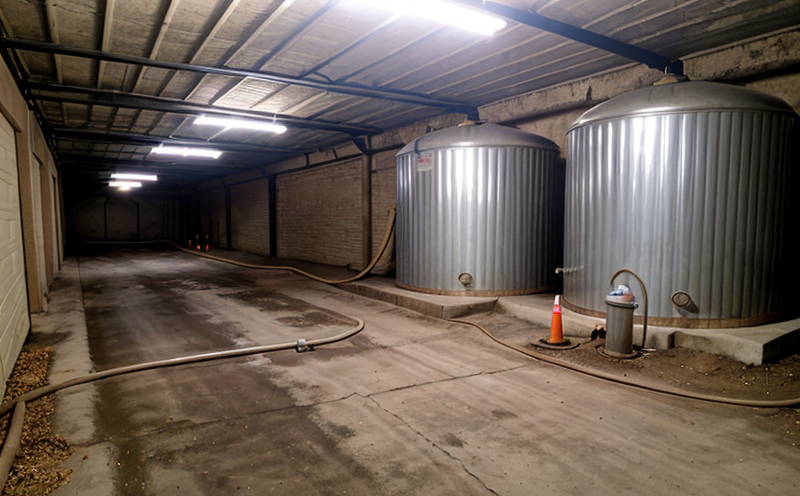Underground storage tank inspection
The inspection of underground storage tanks (USTs) is a critical process that ensures compliance with regulations and maintains the integrity of these vital components used in various industries. USTs are typically buried or partially buried containers designed to store flammable, hazardous, or toxic liquids such as gasoline, diesel fuel, ethanol, and other petroleum products.
These tanks are essential for operational efficiency but also present significant risks if not properly maintained. The inspection process involves a comprehensive assessment that identifies any potential issues before they lead to leaks, spills, or releases of harmful substances into the environment. Compliance with regulations such as the US EPA regulations and other local standards is crucial for facilities handling USTs.
The inspection process involves several stages, including preliminary site assessment, visual examination, internal examination using remote video systems or sonar technology, pressure testing, leak detection using gas chromatography, and sampling of stored materials. This multi-faceted approach ensures that every aspect of the tank's condition is evaluated accurately.
Accurate inspection methods are vital to prevent environmental contamination and ensure worker safety during maintenance activities. The use of advanced imaging technologies allows for detailed internal inspections without compromising the integrity of the UST. Sampling protocols must be strictly followed to avoid cross-contamination, ensuring that any test results reflect the true condition of the stored materials.
Regular inspections are necessary to extend the operational life of USTs and reduce maintenance costs associated with premature failures or leaks. By adhering to rigorous inspection schedules and employing experienced personnel with specialized training, facilities can minimize risks and maintain regulatory compliance effectively.
Scope and Methodology
The scope of an underground storage tank inspection encompasses a wide range of activities aimed at ensuring the safe operation and integrity of the UST. This includes visual inspections both above ground and below, detailed internal examinations using advanced imaging techniques, pressure testing to ensure structural soundness, and comprehensive leak detection.
Visual inspections involve checking for visible signs of damage or deterioration on the exterior surface of the tank. These checks are conducted during excavation when the tank is exposed, providing an opportunity to assess its overall condition closely. Remote video systems allow for thorough examination without disturbing the surrounding soil, while sonar technology provides additional insights into structural integrity.
Pressure testing is a crucial step in assessing whether the UST can withstand specified working pressures safely and efficiently. This process helps identify any weaknesses or defects that could lead to leaks under operational conditions. Gas chromatography serves as an effective method for detecting leaks by identifying minute amounts of escaping hydrocarbons with high precision.
Sampling protocols are strictly followed during inspections to ensure accurate representation of the stored materials. Samples collected from different locations within the tank provide valuable data about quality, purity, and potential contamination levels. By adhering to these rigorous standards, inspectors can make informed decisions regarding maintenance needs and operational parameters.
Industry Applications
| Application Area | Description |
|---|---|
| Petroleum Refineries | Ensuring compliance with EPA regulations and maintaining operational efficiency. |
| Municipal Water Systems | Protecting public health by preventing leaks that could contaminate water supplies. |
| Agricultural Facilities | Minimizing risks associated with storing fertilizers or pesticides properly. |
| Manufacturing Plants | Reducing the likelihood of environmental damage from accidental releases. |
| Transportation Companies | Ensuring safe and efficient fuel storage for fleet operations. |
| Oil & Gas Exploration | Monitoring USTs used in exploration activities to ensure minimal environmental impact. |
| Hazardous Waste Management | Avoiding contamination of soil, groundwater, and surface water during waste storage. |
The application areas for underground storage tank inspections are diverse across multiple industries. From petroleum refineries to hazardous waste management facilities, the need for thorough inspection remains constant. Each sector has unique challenges that require specialized knowledge and expertise, but the core principles of safe operation and compliance with regulations remain consistent.
Why Choose This Test
Selecting an experienced laboratory for underground storage tank inspections offers numerous advantages over less qualified providers. Expertise in this field ensures accurate identification of issues and effective recommendations for repairs or replacements when necessary. Compliance with relevant standards and regulations is a key factor, as it demonstrates the commitment to maintaining safety standards.
Advanced technology plays a significant role in ensuring reliable inspection results. Remote video systems and sonar technology provide detailed images that help pinpoint specific areas requiring attention without causing additional damage during excavation processes. Additionally, gas chromatography enables precise leak detection, helping facilities address potential risks early on before they escalate into major problems.
Regular inspections are essential for extending the operational lifespan of USTs while minimizing maintenance costs associated with premature failures or leaks. By adhering to rigorous inspection schedules and employing experienced personnel with specialized training, facilities can significantly reduce these risks and maintain regulatory compliance efficiently.





